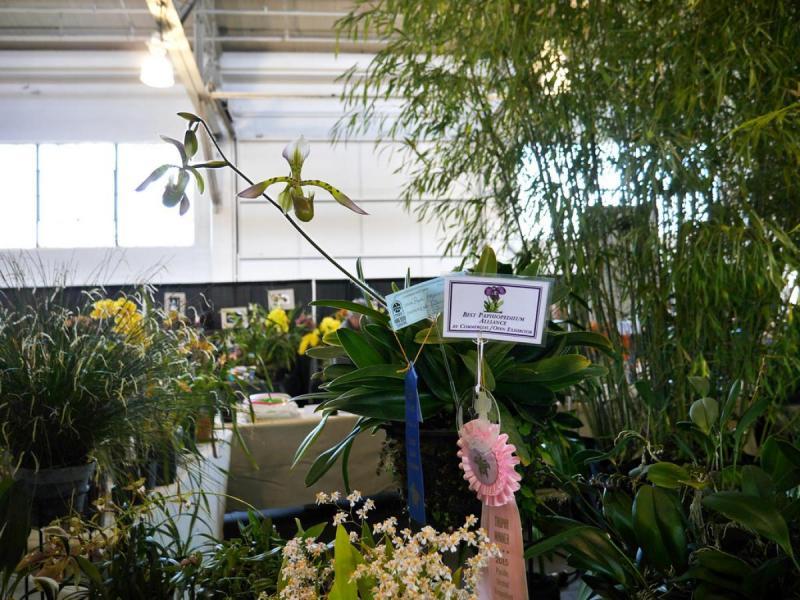Paphiopedilum haynaldianum
Also known as: Haynald's Paphiopedilum or Paphiopedilum haynaldianum h.f. alba Paphiopedilum haynaldianum h.v. Laurae Paphiopedilum haynaldianum f. album Cordula haynaldiana in the subfamily: Cypripedioideae
General Information
Haynald's Paphiopedilum is a large warm to hot growing epiphytic, lithophytic or terrestrial orchid belonging to the sub family Cypripedioideae. It is named after the Hungarian Orchid Enthusiast in the 19th century.
Plant Description
Grows to 30-90cm. Each new growth has numerous erect arching leaves that grow to 5-45cm long
Flowers
Numerous blossoms appear during Winter and Spring
Blooming Season
- Spring
- Winter
Substrate(s)
- Coarse
Care Notes
These orchids like to be kept on the dry side, but may need to be watered daily during warm weather, and prefer a well draining mix or also do well mounted, provided they can be watered regularly.
These are quite a forgiving orchid, there are no special requirements to get this orchid to flower, just good care and consistent conditions. Larger plants may be more fussy and can react poorly to change; a poorly timed repotting, a pest infection or an unusually hot day can set them back for a couple of years. However, even plants that have been treated poorly can thrive, and if they are set back they often recover much stronger then they would otherwise be.
Climate
These orchids grow in cool climates, at low altitudes, in cool plains, forests or coastal scrub.
They are forgiving of humidity variances as long as temperatures are kept on the cool side. They can do well outdoors in the garden in cool and temperate areas, though it is important that they are protected from warm dry winds. They can enjoy morning sun especially in winter but will need protection from the hot sun in the afternoon and during summer. With some acclimatisation they may be able to receive more sun.
Grows at low to high elevations. Rainfall ranges from 18mm to 409mm per day, heaviest in August and lightest in February. Humidity ranges from 63% to 84%, highest in September and lowest in April. Temperature ranges from 18C to 30C, highest in April (21C to 30C) and lowest in January (18C to 26C).
Watering
These orchids are sensitive to excessive watering and should only be watered when they look thirsty. Water infrequently and ensure that the roots are dry before watering. Keep an eye on them especially during hot weather as overwatering can lead to rot, whereas underwatering may result in wilting or shriveling, which while unattractive, will not kill the plant.
Fertiliser
These orchids do not need to be regularly fertilised and roots may be sensitive to salt build-up, dying back and therefore impairing the plants growth or even killing it.
If fertilising, use half to quarter of the recommended amount of fertiliser. If they receive fertiliser as part of a collection, be sure to flush out the pots regularly with fresh water and monitor the roots by checking how much resistance is given by the plant when nudged in its pot or mount. If the plant becomes wobbly or loose, repot in fresh mix or rinse the media/mount thoroughly and do not fertilise for at least 3 months.
Be sure to flush out excess fertiliser by running water through the media regularly year round. Use a high Nitrogen fertiliser year round. Use a high Phosphorous fertiliser during Summer.Potting
Due to the growth nature of these plants they are best mounted onto cork, tree fern slabs, or even trees if the climate suits. Water regularly especially in hot weather.
This plant does well mounted. Repotting is best done annually.




















